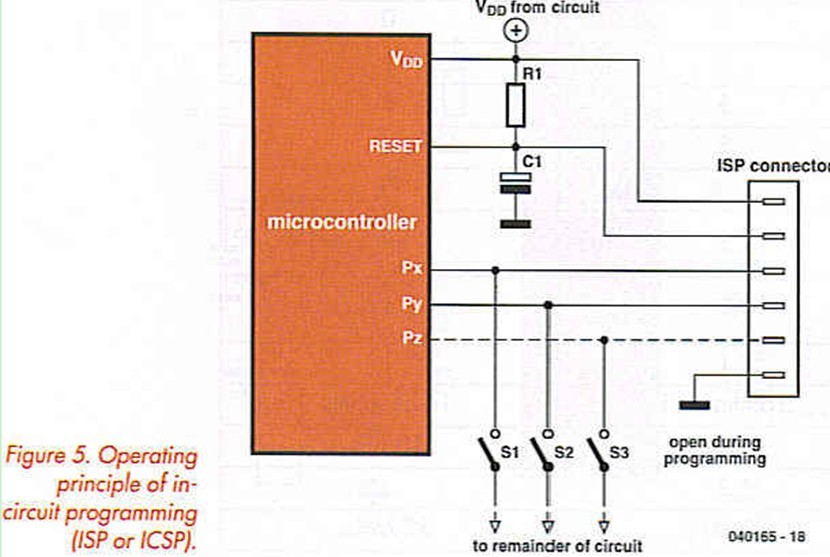

Project Solutions
Trends in Microcontroller (4)
Published:2011/7/31 21:25:00 Author:Phyllis From:SeekIC
By Christian Tavernier
Most programmers now prefer C or BASIC over assembler
For the 8051 family there is, among others, a special Bascom version from MCS, and SDCC, a free C compiler. Only the Motorola products suffer from a sparse availability of compilers, since the amount on offer is absolutely minimal.
Accepting the fact that most software developers often use identical programming elements, Microchip has come up with an original idea: a new program called Maestro. Using this, you con develop an application with next to no actual programming. This development environment can be downloaded free from the Microchip website and makes it possible to stick together standard modules. In this way a program can be put together nearly automatically.
In addition to a compiler, a microcontroller project also requires other development tools. Microchip and Atmel have the upper hand here with MPLAB (Figure 4) and AVR Studio respectively. These development environments, running under Windows, contain everything a programmer could only dream of a few years ago, including a program simulator. This development is still in progress, because MPLAB is currently up to version 6.5 and AVR Studio is up to version 4, so that even new products are well supported. 
Despite the remarkable number of features these development tools are completely free. You only need to download them from the manufacturer’s website to get started. It has to be noted that Motorola and other lesser-known manufacturers are running behind in this area, certainly when compared with these free products.
Free development tools running under Windows contain everything that programmers until recently could only dream of
In circuit programming
Although it isn’t really new, ISP (In System Programming) or ICSP (In Circuit Serial Programming) is without doubt the most important development regarding the programming aspect. When the programmer has created the program in the correct form, microcontrollers that support it can be programmed from a standard PC via a very simple interface, while the controller itself can remain in the circuit.
Figure 5 illustrates the operating principle of this concept. The microcontroller obtains its power supply and clock signal from the PCB. Two or three port pins on the IC temporarily have an alternative function, which makes it possible to erase and program the program memory. If the application doesn’t use these pins, then they may be connected directly to a PC. Otherwise a few jumpers or DIP switches may be required to isolate the circuit during programming. 
All modern microcontrollers with Flash memory support this programming method and on the Internet countless free software can be found for all the various controllers to program them in this way.
A program that distinguishes itself in this respect is FLIP (Figure 6). It is offered free by Atmel and can program countless microcontrollers from this manufacturer, provided they have some kind of serial interface (RS232, SPI, USB and even CAN-bus). This is currently the most versatile program around. 
Microcontrollers or not?
In this article we must not forget to mention special microcontrollers such as the Basic Stamp, the PIC Basic and the Basic Tiger. These ICs with 24, 28 or 40 pins have, on a tiny PCB, a fast microcontroller, which is pre-programmed with an interpreter for a higher language are emerging, such as Java for the Javelin Stamp from Parallax. Even programming in an object-oriented language is possible with the OOPic.
Even though these produces are very successful, they are very expensive compared to real microcontrollers, mainly because of they way they are manufactured. They seem to be most suitable for experimental applications or small production runs.
Conclusion
Much more can be said on this topic. But if v/e have to summarise the developments of the microcontroller area in a few words, then we can say that the advance of microcontrollers in all aspects of electronics is becoming increasingly important. These can be either more powerful devices on the one hand or v/with ever smaller and cheaper versions on the other hand. The application of microcontrollers is becoming easier and easier with free development tools and powerful compilers.
The microcontroller has become an indispensable part of electronics. This is testified by the many projects containing microcontrollers that have already appeared and will appear in Elekior Electronics.
Reprinted Url Of This Article: http://www.seekic.com/blog/project_solutions/2011/07/31/Trends_in_Microcontroller__(4).html
Print this Page | Comments | Reading(845)
Article Categories
New published articles
· Imagination works with TSMC to develop FinFET process
Author:Ecco Reading(32821)
· XMOS pushes event-driven MCUs with lower price
Author:Ecco Reading(3526)
· Intel brings upgraded 32-nm SoC for smartphones
Author:Ecco Reading(3246)
· Micron pushes TLC 128-Gbit NAND flash
Author:Ecco Reading(3801)
· Intel will stop supplying desktop motherboards
Author:Ecco Reading(5331)
· Processor market was expected to regain strength in 2013
Author:Ecco Reading(3315)
· It was reported that TSMC sales fall steeply
Author:Ecco Reading(3462)
· Cisco, NXP work with auto wireless startup
Author:Ecco Reading(3604)
· Micron was impacted by manufacturing glitch
Author:Ecco Reading(4009)
· China can make 22-nm transistor by themselves
Author:Ecco Reading(3807)
· Chip market rebound is coming, according to survey
Author:Ecco Reading(3748)
· Sony, Toshiba will spend more on chips, iSuppli reports
Author:Ecco Reading(3780)
· Qualcomm becomes the 13th company to join NFC Forum board
Author:Ecco Reading(6094)
· TSMC increases building work for FinFET fab
Author:Ecco Reading(3764)
· TI plans to cut 1,700 jobs in OMAP shift
Author:Ecco Reading(4579)